Webster’s Dictionary defines timber as wood prepared for use in construction or carpentry, or trees grown for that purpose. Bamboo, however, is not a tree. All species of bamboo belong to the grass family, Poaceae. Whether it’s a dwarf bamboo, just a few inches tall, or a timber bamboo that exceeds 100 feet in height, all bamboos are grasses.
NOTE: This article first appeared in July 2020, most recently updated in April 2024.
Which species of bamboo do we refer to as timber bamboo?
Timber bamboo is not a particular species of bamboo. The common term can refer to any number of bamboos that will grow at least 3-5″ in diameter and at least 30 to 50 feet tall, comparable in height to a good-sized tree. Some species can exceed 100 feet. But despite their size and the quality of their wood, they are not trees at all. The common varieties of timber bamboo belong to the genus Bambusa, Dendrocalamus, Guadua or Phyllostachys.
There is no strict definition of timber bamboo based on specific genetics or minimum dimensions. Some species actually employ the phrase “timber bamboo” in their common names. Other varieties of bamboo simply evoke the term based on their indisputably great size and stature.
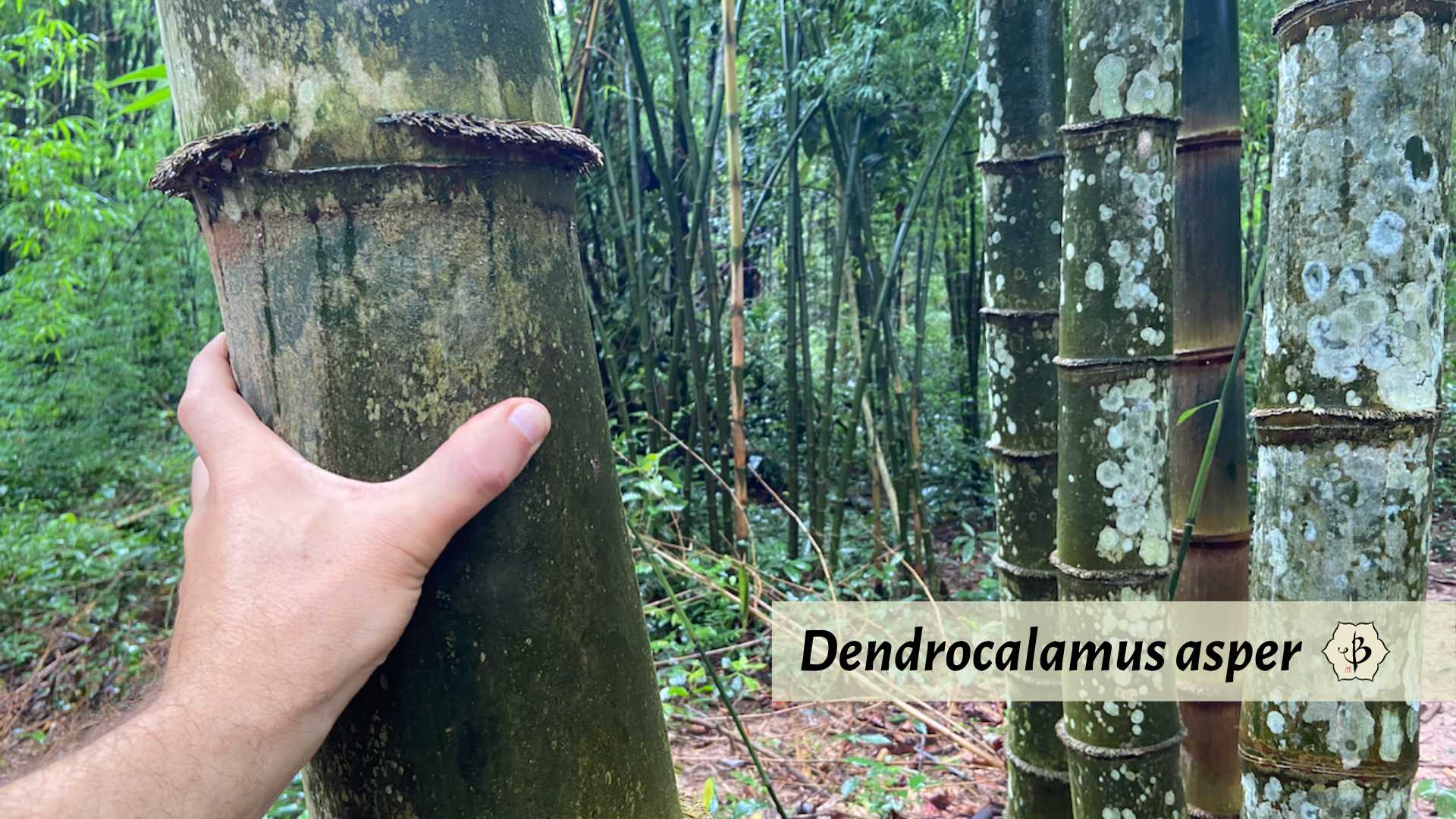
The following table includes a few of the species that are mostly referred to as timber bamboos. Also check out our in-depth articles on Bambusa, Dendrocalamus, Guadua, Gigantochloa, and Phyllostachys.
| Botanical name | Common name | Description |
| Phyllostachys vivax | Chinese timber bamboo | Running bamboo, 40-60 feet tall, 4-5″ thick |
| Phyllostachys bambusoides | Madake, or Japanese timber bamboo | Running bamboo, 50-80 feet tall, 3-5″ thick |
| Phyllostachys edulis | Moso bamboo | Most important commercial variety, up to 100 feet tall, 5-6″ diameter |
| Guadua angustifolia | Giant Guadua | South American clumper, 50-100 feet tall, several inches thick |
| Dendrocalamus asper | Giant bamboo | Tropical Asian clumper, 50-80 feet tall, several inches thick |
| Dendrocalamus sinicus | Dragon bamboo | From Laos, with giant culms over 150′ tall and 1 foot wide |
| Bambusa chungii | Blue timber bamboo | Clumping bamboo, 30-35 feet tall, 2 inch canes |
| Bambusa emeiensis var. Viridiflavus | Yin Yang timber bamboo | Clumping bamboo, 30-35 feet tall, 2 inch canes |
| Bambusa oldhamii | Oldham’s | Clumping bamboo, 50-60 feet tall |
| Bambusa vulgaris | Golden bamboo, common bamboo | Loose, open clumps, 40-50 feet tall, 3-4″ diameter culms |
| Bambusa vulgaris var. Vittata | Painted bamboo | Clumping bamboo, 30-40 feet tall, 3-4 inch canes |
How fast does timber bamboo grow?
For a grass to get 40 or 50 or 80 feet tall, it has to grow incredibly fast. Unlike trees, which add a little height to their apex every year, a bamboo shoot will reach its full height in a single growing season. In order to achieve this, these giant bamboo specimens must grow at least several inches a day. And some of them can actually grow as much as three feet in a day.
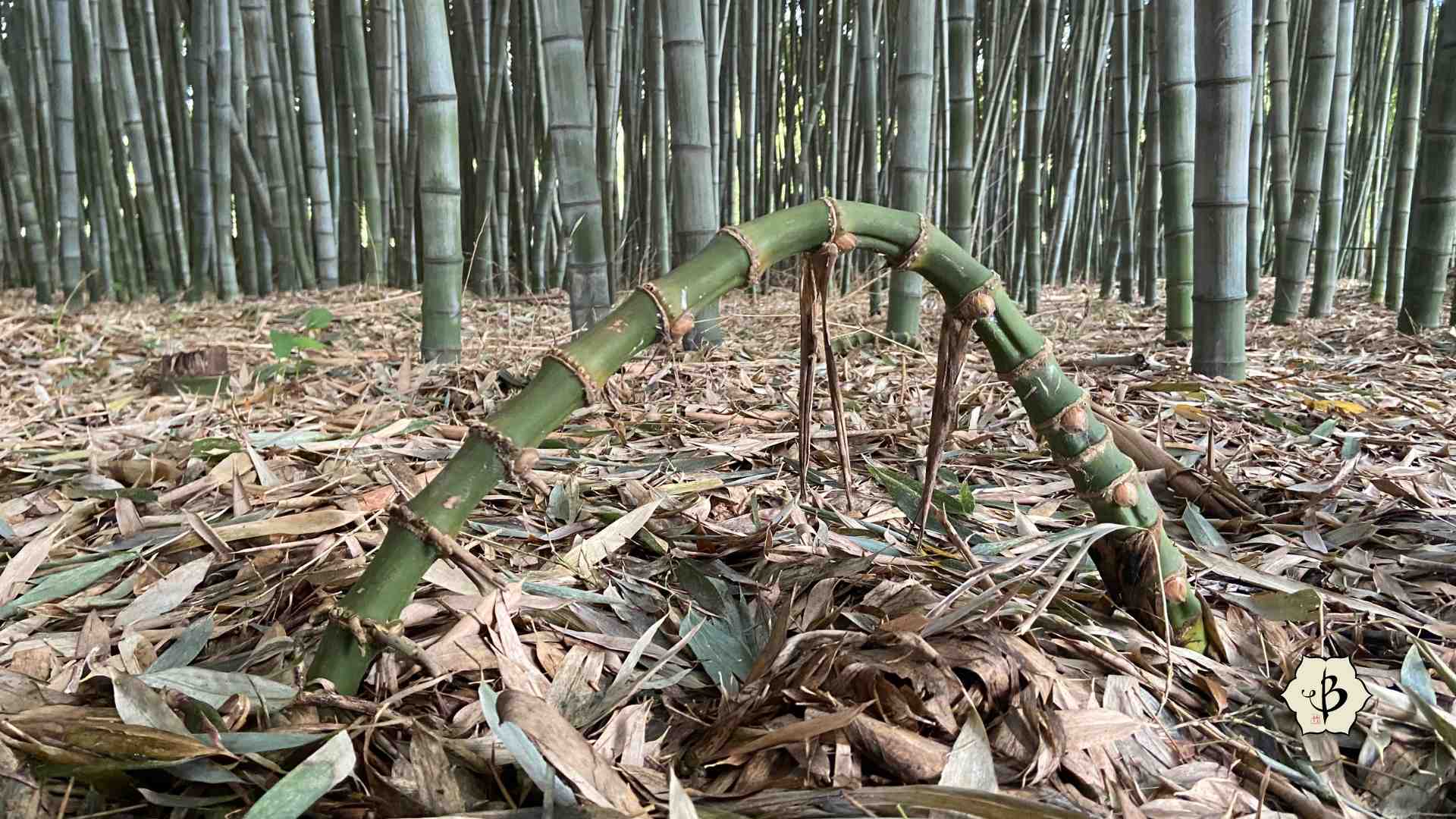
Is it invasive?
The answer to that question depends on which type of timber bamboo we’re looking at. Any member of the genus Phyllostachys is going to be a runner, and as such it has the potential to become invasive. The rhizome roots of running bamboo are leptomorph, growing horizontally and always spreading. So without proper containment, they can really take over.
On the one hand, the culms and roots of these giant bamboos are too big to sneak around unnoticed, unlike more modestly sized species. But their sheer size is going to make them a force to reckon with. You can only saw through so many 5″ bamboo poles before your arm starts to cramp up. Powers tools might be a better idea.
Ordinarily, a high-quality root barrier is going to be one of your best weapons for controlling a running bamboo. But with specimens this large, the plant will probably knock out the barrier within the first year or two.
Your better option will probably be to plant a clumping bamboo. The issue here is that most of the clumping varieties of timber bamboo are tropical or subtropical, native to Central America or Southeast Asia. So unless you live in a place like Florida or Alabama, your Dendrocalamus and Guadua specimens aren’t going to perform very well. You’ll be better off planting some Oldham’s bamboo, which does great in more temperate climates, even if it’s not especially cold hardy. If you’re in a climate with freezing winters, you’ll need to stick with one of the running species of Phyllostachys.
Finally, even if you’re planting a clumper, these timber bamboos get huge. Some of them will grow as many as 100 culms before the clump stops spreading. So technically, they might not be invasive, but they are definitely going to take up some serious real estate.
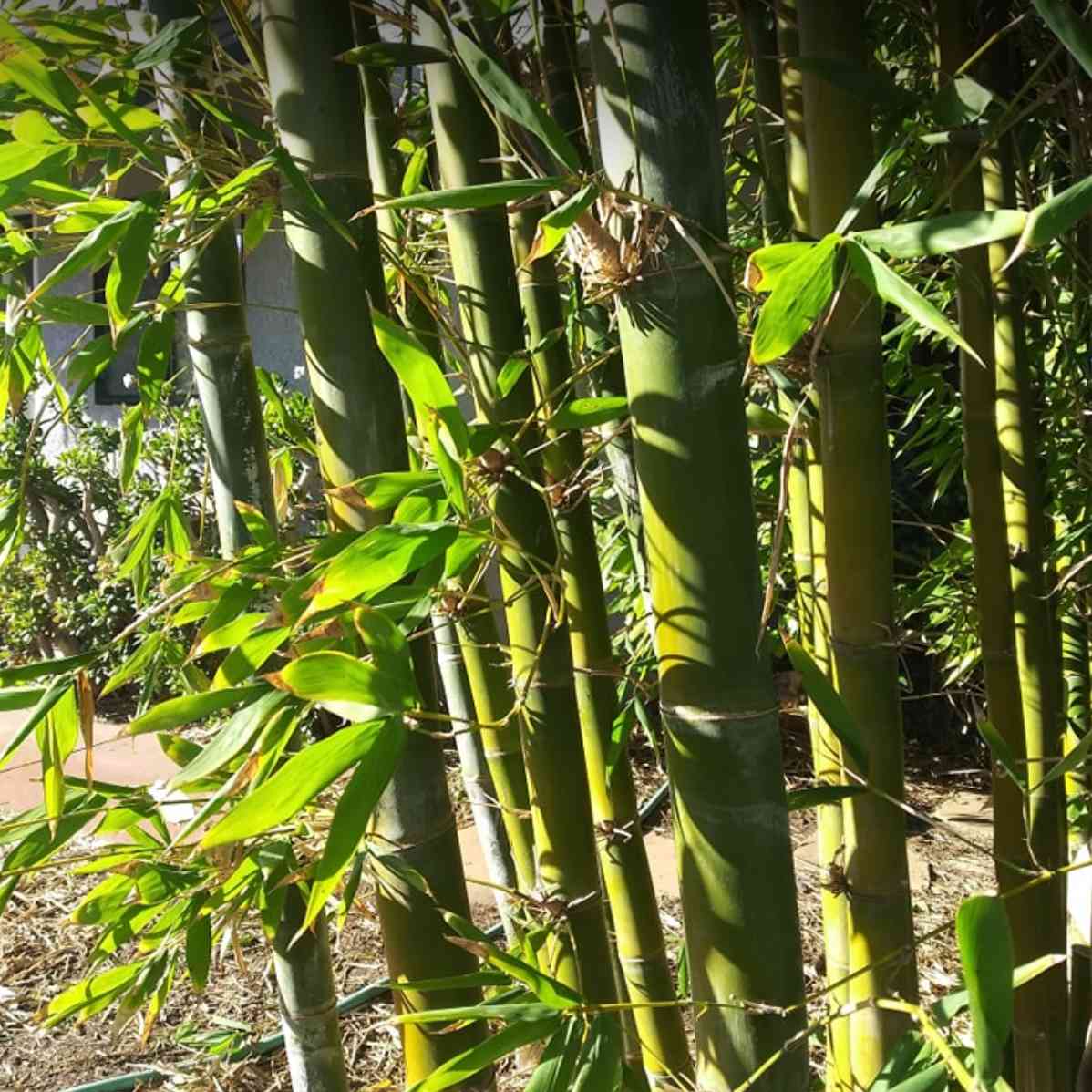
Is timber bamboo good for building?
Yes, bamboo makes an excellent building material, and for a number of reasons. In places like Central America and Indonesia, with very little heavy industry, Guadua and Dendrocalamus bamboos provide a very important building material. For trees to reach a comparable size, around 100 feet tall, it would usually take at least 20 or 30 years. But these bamboos get that big in a single growing season.
In addition to its tremendous growth rate, bamboo is also incredibly renewable. When these massive poles are harvested, you don’t have to start over and replant the forest. Bamboo is a grass, so as long as the root system and a few culms are left in place, new culms will begin shooting up almost immediately to replace the old ones.
And bamboo’s hardness and resilience are as great as any actual lumber. The hardness of bamboo is often compared to that of steel. At the same time, bamboo has a flexibility that you simply can’t get out of a hardwood tree.
Timber bamboo species list
Phyllostachys vivax: This is one of the most popular timber varieties in North America. The giant, golden-colored canes are impressive and attractive. Phyllostachys is one of the more cold-hardy genera of bamboo, and this species is good down to about 5 or 10º F. They are also runners, which may be a point of concern, but in the colder climates, they tend not to get so out of control, not like a Golden Bamboo or a Bisetti. In ideal conditions, Vivax bamboo can reach as much as 70 feet tall, but if they get to 50 feet you’re doing pretty well. The yellow culms grow to 4 or 5 inches in diameter. Culm walls are not very thick, however, so it’s not the best species for construction.
Phyllostachys bambusoides: This is a slower growing variety of Phyllostachys (which can sometimes be a good thing). But once it reaches maturity you can enjoy the kind of bamboo grove where you can stroll through and listen to the poles knocking together in the breeze. Madake, as it is commonly known, is comparable to Henon or Vivax in size and cold hardiness. But the canes get slightly larger, and more importantly, they have very thick walls, making them ideal for building and construction. It seems to do best in USDA zones 7 and 8.
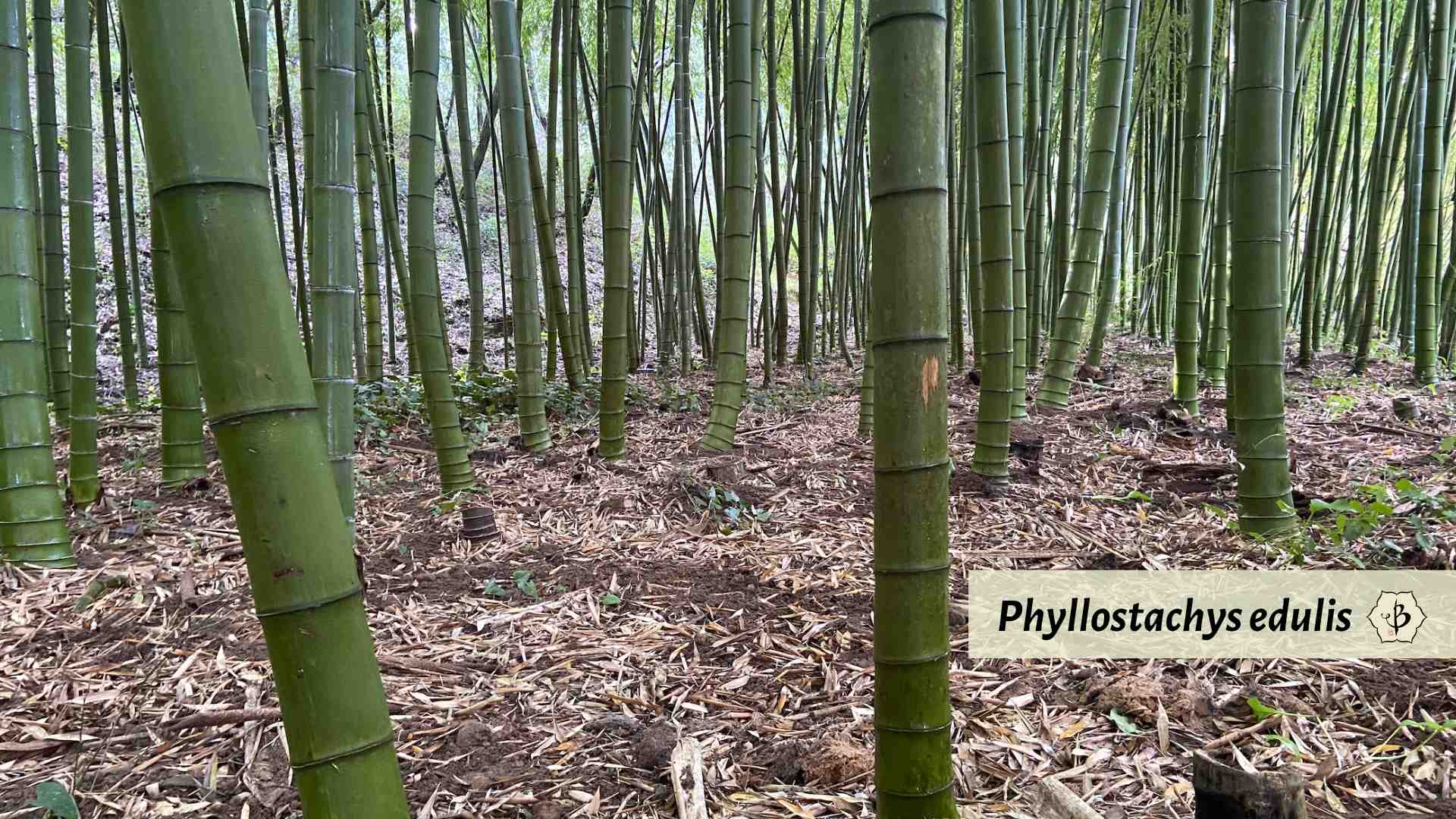
Phyllostachys edulis: One of the most important bamboo varieties in the world, Moso bamboo is the Chinese species used for making bamboo textiles, flooring and cutting boards. It grows best in southern China, but commercial bamboo farms are also sprouting up in Florida. This is the largest species of temperate bamboo, and it grows up to 100 feet in its native habitat. In Florida, it can get up to 70 feet high with culms 5 or 6″ thick. But it does not do well west of the Mississippi. Tender young shoots of Moso bamboo are also prized for eating.
Phyllostachys nigra ‘Henon’: An excellent choice in North America, where it performs much better than Moso, Giant Gray is a cultivar and possibly the original species of Black Bamboo. Unlike the common P. nigra, this variety has beautiful, towering, greenish-gray culms that can get up to 50 or 60 feet tall and more than 4 inches thick. Cold hardy to -5º or -10º F.
Guadua angustifolia: Native to Central and South America, this neotropical variety is incredibly important for building in Colombia and other parts of Latin America, locally known as Iron Bamboo. It does not grow well in the US. But because of its superior wood quality, dried poles of Guadua are commonly imported for construction purposes. This massive bamboo easily gets 100 tall with canes 6 to 7 inches in diameter.
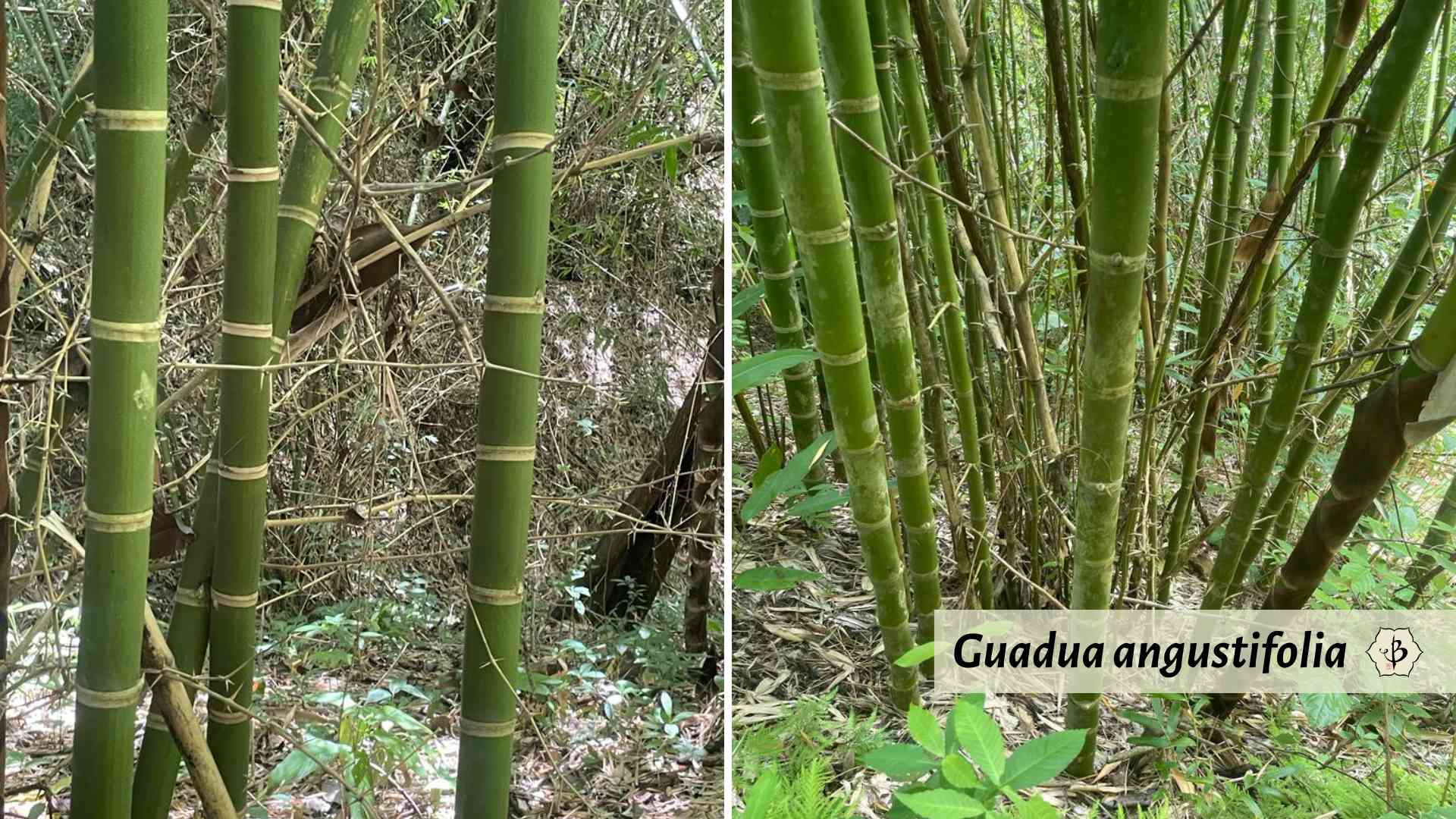
Dendrocalamus asper: This giant clumping bamboo is the most important for building and construction in Indonesia and Southeast Asia. If you’ve seen the incredible bamboo structures and pavilions at the Green School in Bali, that’s D. asper. These plants grow up to about 80 feet tall and several inches in diameter, with especially thick culm walls. Asper’s cousin, Dendrocalamus giganteus, can grow even larger, although the poles are not as high quality for building.
Dendrocalamus sinicus: A clumping variety only found in Yunnan, China and Laos, this species is believed to have the largest culms of any bamboo. Individual canes can reach over 150 feet high, with an outrageous diameter of 12 to 14 inches across. It’s not widely known and is hardly used outside of Laos and the Yunnan Province. The superlative species has gained increasing attention in recent years, and its seeds are in high demand.
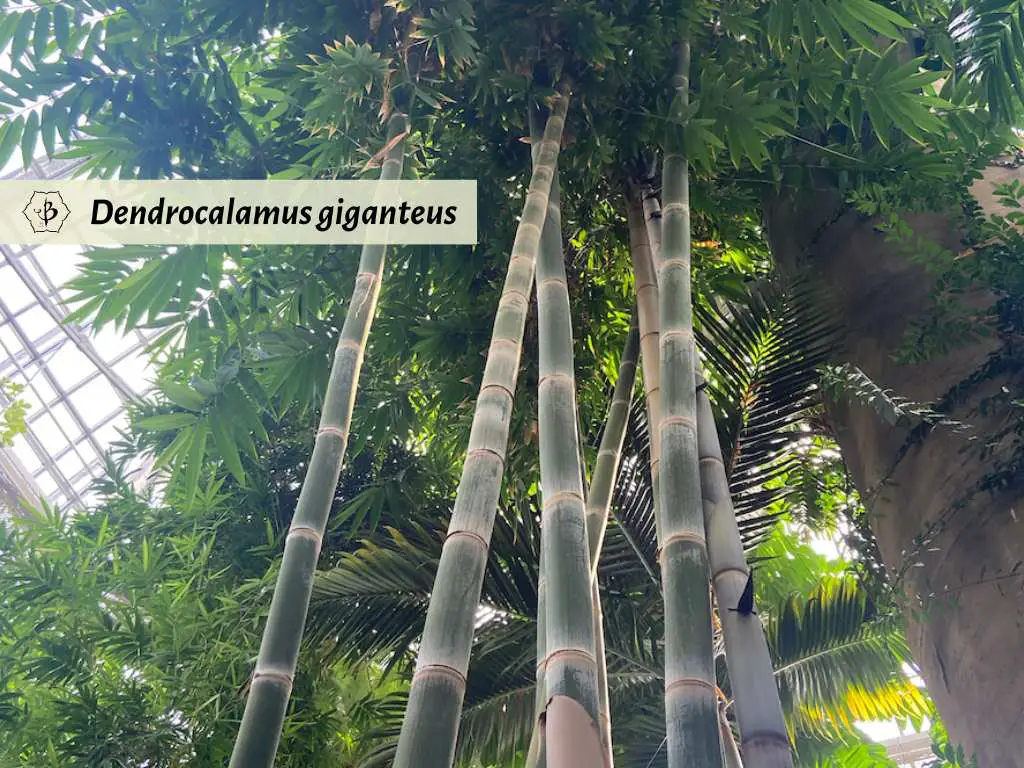
Bambusa oldhamii: Probably the most widely grown bamboo in all of the United States, Oldham’s does well and looks beautiful in a wide range of temperate climates. It’s a clumping bamboo and won’t become invasive, yet it’s cold hardy down to about 20º F, making it more resilient than most clumpers. The elegant canes usually grow about 50 feet tall and get about 4-5″ thick, and they are filled with thick, green foliage.
Bambusa vulgaris: Sometimes known as Golden bamboo. It can be confusing, because this one is an open clumping bamboo, and there’s also Phyllostachys aurea, also called Golden bamboo, which is a very aggressive runner, though not nearly as large as B. vulgaris. Poles are 3-4 inches in diameter with thick walls, but they aren’t always very straight, so they’re not the best for building, despite their strength. This species also has a number of interesting subspecies, or cultivars, including Green vulgaris, Vittata, and Giant Buddha Belly, or Bambusa vulgaris cv. Wamin.
Bambusa vulgaris, variation “Vittata”: One of several subspecies of B. vulgaris, this is an especially popular and attractive variety, often called Painted Bamboo, because of its distinctive markings. The culms are deep yellow with green stripes that vary in thickness and color. Native to China, this variety has been naturalized all over the tropics. Though Vittata is a clumper, it spreads very successfully and sometimes invasively, as culms and branches fall to the ground and quickly take root.
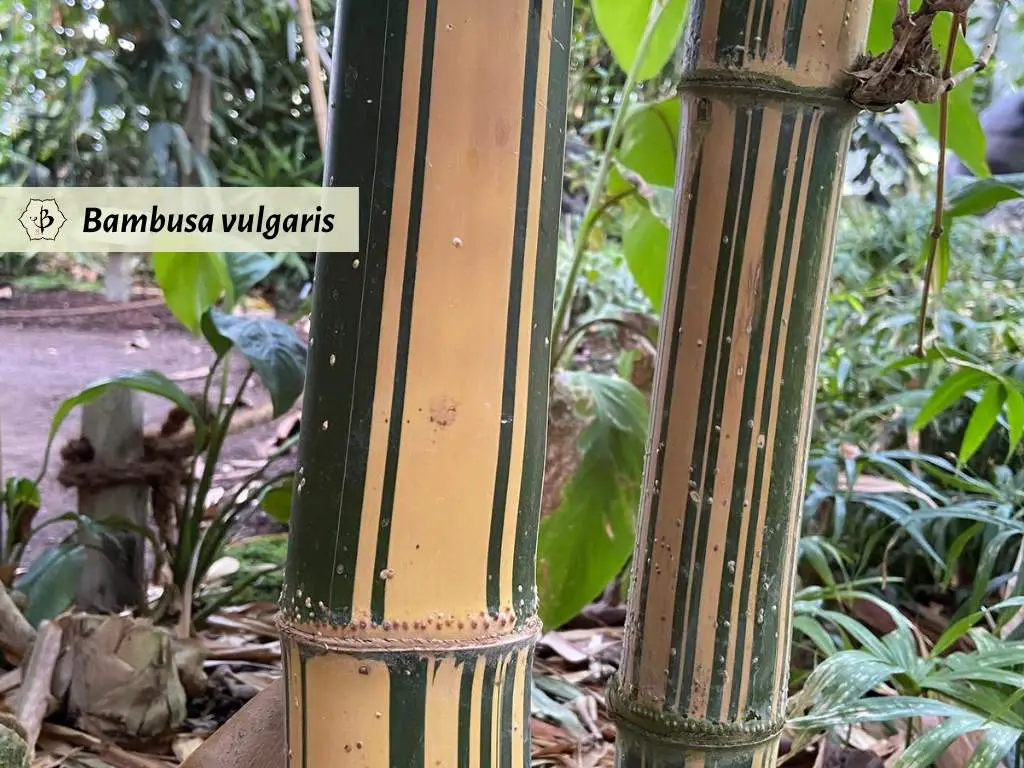
Further reading
If you enjoyed this article, please consider sharing it and subscribing to our blog. You might also find some of the following articles helpful and informative.
- Bamboo farming in the US
- Building a bamboo house
- Native bamboo of North America
- Best varieties of clumping bamboo
- Running bamboo
- Bamboo nurseries in America
FEATURE IMAGE: Fred Hornaday with a formidable culm of Phyllostachys edulis, better known as Moso.

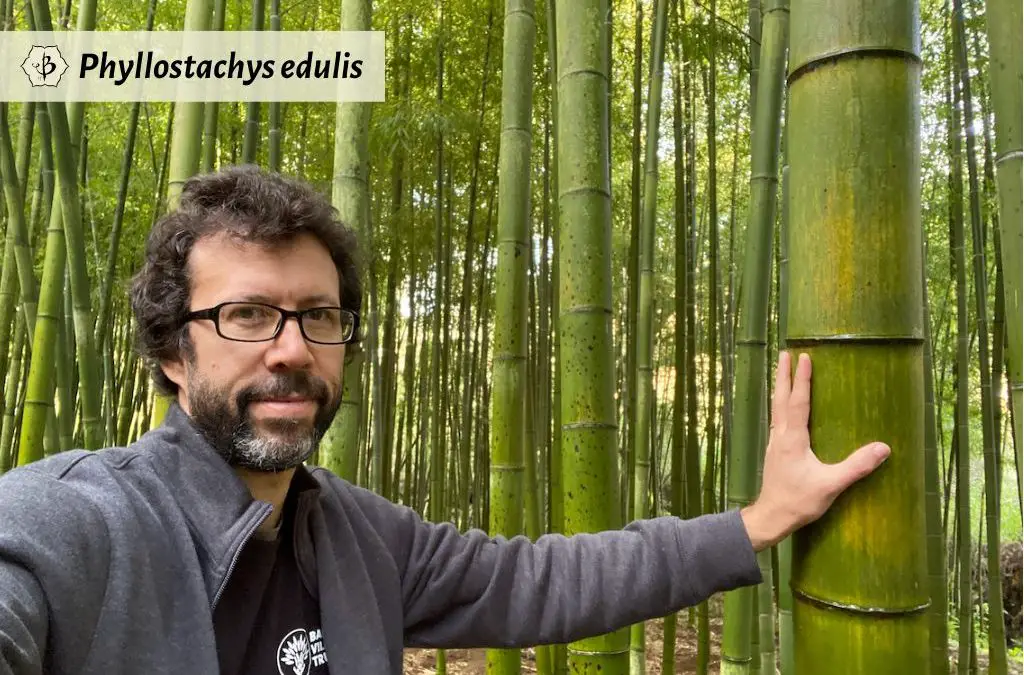
























I am looking for bamboo to grow in Mozambique to produce charcoal. What is the best species to use for the purpose?
Dendrocalamus asper would be an excellent choice. It’s a big bamboo, with thick culm walls, and is commonly cultivated in sub-Saharan Africa. And the shoots are edible. You might try Bambusa balcooa as well.
Which timber bamboo variety would support mediterranean climate ?
I would recommend Bambusa oldhamii. It’s subtropical and will tolerate minimal frost without damage.
https://bambubatu.com/bambusa-oldhamii-chinese-timber-bamboo/
How do you determine the area necessary for a grove of bamboo, how big a square/rectangle minimum is necessary to establish a producing grove of timber bamboo. The ones I will be planting are P. Vivax, P. Rubromarginata, P. Edulis ‘Moso’, P. Nigra ‘Henon’, P. Bisetii, and P. Aureosulcata.
For larger species like those, give the as much space as you have available. They like to spread out. It depends what you’re trying to produce – shoots to eat, or poles for building, hobby or commercial? 50-100 square meters would be a good start, up to a few hectares (or several) if you have space and want to commercialize it.